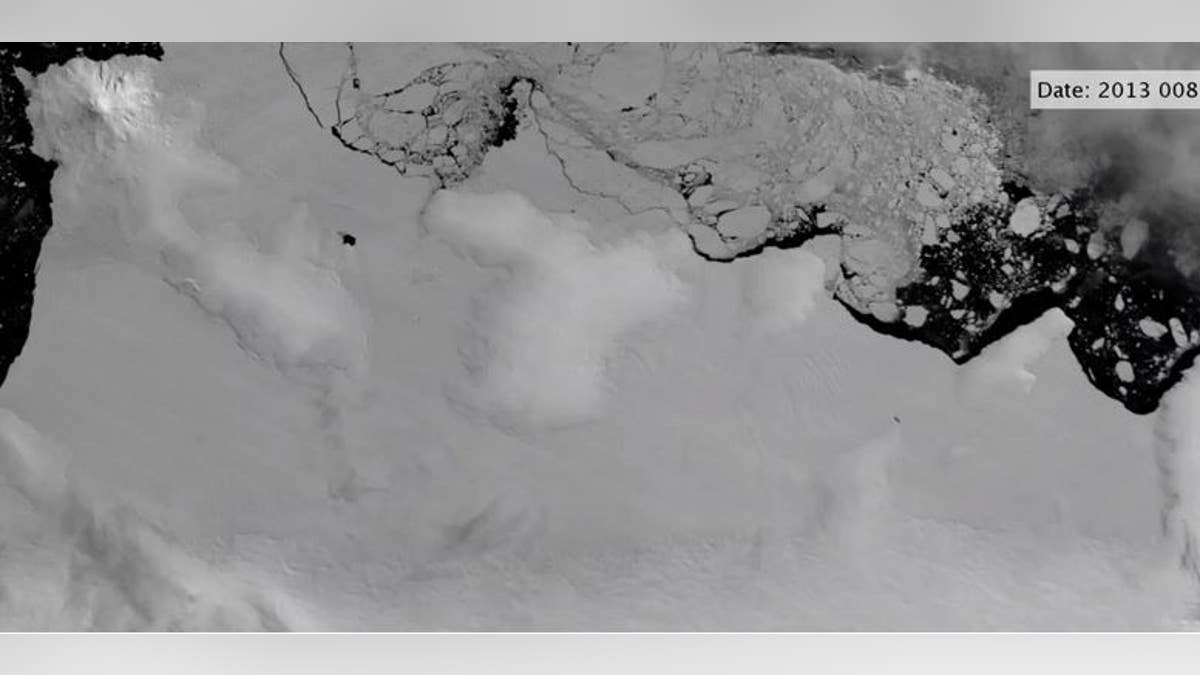Fox News Flash top headlines for Oct. 10
Fox News Flash top headlines for Oct. 10 are here. Check out what's clicking on Foxnews.com
Upside-down "rivers" of warm ocean water are attacking the edges of Antarctic ice shelves from below, creating conditions ripe for break-ups and sea-level rise, according to scientists.
A study published Thursday in Science Advances examines this process, which could affect the continent's future.
"Warm water circulation is attacking the undersides of these ice shelves at their most vulnerable points," said Karen Alley, a visiting assistant professor of Earth Sciences at the College of Wooster in Ohio, in a statement. "These effects matter," she said. "But exactly how much, we don't yet know. We need to."
AMAZON SPOKESMAN BLASTED OVER ATTACKS AGAINST TRUMP ADMINISTRATION'S PATRIOTISM

Satellite images show polynyas (open-water regions) forming at the ends of basal channels beneath shear margins of the East Getz Ice Shelf. (Karen Alley/The College of Wooster and NASA MODIS/MODIS Antarctic Ice Shelf Image Archive at the National Snow and Ice Data Center, CU Boulder.)
Ice shelves float out on the ocean at the edges of land-based ice sheets, according to scientists, and about 75 percent of the Antarctic continent is surrounded by these extensions of the sheet.
The shelves can be hemmed in by bumps and walls in the ocean floor. When restrained, the ice shelves slow down the flow of ice from the interior of the continent toward the ocean.
However, if an ice shelf retreats or breaks apart, ice on land flows much more quickly into the ocean, increasing rates of sea-level rise.
FIRST EVER DIAMOND WITHIN A DIAMOND FOUND IN RUSSIA IS SAID TO BE 800-MILLION-YEARS-OLD





















